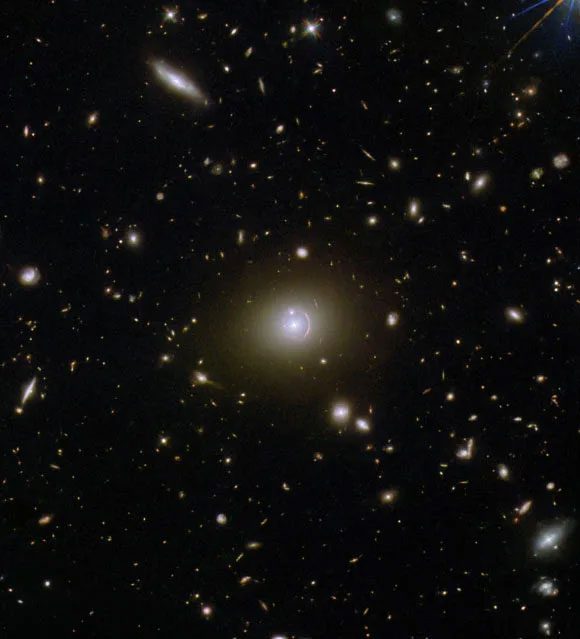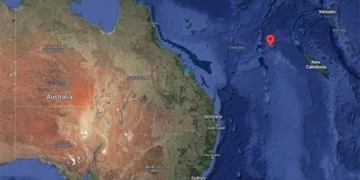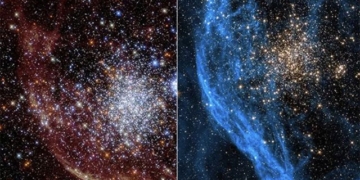In an extremely rare moment, an ancient object transformed into an “Einstein ring,” appearing before Earth thanks to a chaotic warped spacetime.
In a photo captured by the Hubble Space Telescope, recently released by NASA, a cluster of peculiar objects featuring a bright luminous dot surrounded by a red ring was observed within the Piscis constellation.
This cluster includes one of the most distant objects ever seen by humanity.

Peculiar cluster of objects in the Piscis constellation – (Image: NASA).
According to scientists operating the Hubble mission, the most noteworthy object in this strange image is a galaxy located approximately 19.5 billion light-years from Earth, named HerS J020941.1+001557.
Hubble should not have been able to see such a distant object, but it “transcended” thanks to “gravitational lensing”, which involves foreground cosmic objects with significant gravitational force, forming a magnifying lens suspended between Hubble and the ancient object.
The age of this galaxy is unknown, but it is one of the objects from the cosmic dawn. It was once closer to Earth but has “run far away” due to the universe’s continuous expansion.
In Hubble’s image, the light from this object is distorted into a crescent shape, forming a rare “Einstein ring” in the sky.
According to Sci-News, an Einstein ring occurs when light from a very distant object is bent around an intermediate object with a large mass. In this case, it is the two remaining galaxies in the strange image.
The first one is SDSS J020941.27+001558.4, a galaxy about 2.7 billion light-years away from us, which is the largest bright dot in the cluster.
Meanwhile, the other bright dot above it—seemingly intersecting with the curved crescent of light—is SDSS J020941.23+001600.7, another closer galaxy.
These two galaxies closer to Earth are the “gravitational lenses” mentioned earlier.
The galaxy located 19.5 billion light-years away likely has a normal shape, resembling a spiral disk like other galaxies, but the light from it has undergone complex transformations as it passed through the chaotic warped spacetime created by the foreground galaxies.
Nevertheless, this spacetime distortion also allows the light to “transcend” spectacularly. The distant galaxy is magnified, and its light takes a “shortcut” to reach Earth’s telescope.
Finally, a community science project involving numerous public participants—SPACE WARPS—has helped identify this remarkable cluster of objects from Hubble’s vast data archive.


















































